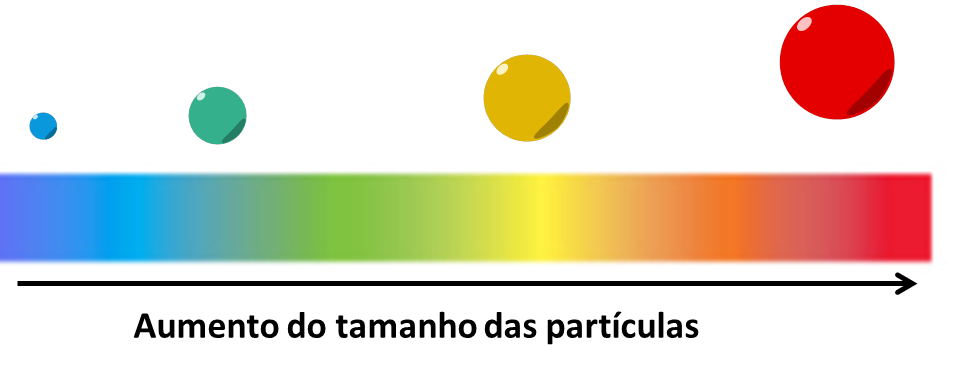Quantum Dots
Quantum dots (QDs)
It’s a new area of investigation for the group. These materials, of nanometric scale, are given as the next generation of electronic devices and optoelectronics like the diodes light emmiter and photo voltaic cells.
What are the QDs?
The QDs are nanoparticles or nanocrystals of semiconductor material with a dimension fluctuating from 2 to 10 nm, with elements from the group II-VI (CdSe, CdTe, CdS, ZnSe, ZnO, etc) or III-V (InP, InAs) [1] with distinct properties, like: high absortion, photostability, ample region of the excitation spectrum with tight emission strips and low tendency to photodegradation [2].
Exclusive Physical properties arising from the quantum confinement.
Decreasing the size of QDs, the confinement degree resulting the recombination of the electron-hole pair (exciton) become stiffer therefore it increases the difference between the valency strip and the conductive strip (energy band gap) [3]. Possibility to control the energy band gap and the emission wavelength setting the QDs size!!!

Density representation of states to a nanocrystal and the respective confinement from three spatial dimensions.
What are the applications?
The semiconductor nanocrystals present many applications including light emission technologies like: displays, lasers, quantum computing, transistors, solar cells [4,5], biomedicine and biosensors [6], promising like biological markers the detection and treatment of solid tumors in initial stage [7], to many catalytic systems, being this last application, a not fully exploited area [8].
QDs of ZnO Preparing and characterization
The ZnO has receiving a very special attention from the scientific community due to his singular optic, electronic and magnetic properties [9]. The ZnO has a band gap of 3,37 eV (365 nm) the ambient temperature beoynd shows an important spike of emission around 520 nm [10,11]. Between the semicondutors oxides is one of the most promising to applications in optic electronics devices, photovoltaic cells, transparent conductors, sensors to many gases like acetylene, ethanol, carbon monoxide and photocatalysis [10,12]. Beyond that, presents piezoelectricity properties, presenting a structure not centerline-symmetric, biocompability with biomedical applications and chemical stability [12].
1. Mansur, H. S. Wires Nanomed Nanobi 2010, 2, 113-129.
2. Fu, Y.; Zhang, J.; Lakowicz, J. R.. Photochem Photobiol 2009, 85, 646-651.
3. Alivisatos, A. P. Science 1996, 271, 933-937.
4. Sargent, E. H. Nat Photonics 2012, 6, 133-135.
5. Zhitomirsky, D.; Kramer, I. J.; Labelle, A. J.; Fischer, A.; Debnath, R.; Pan, J.; Bakr, O. M.; Sargent, E. H. The Effect of Polydispersity. Nano Lett 2012, 12, 1007-1012.
6. Medintz, I. L.; Uyeda, H. T.; Goldman, E. R.; Mattoussi, H. Nat Mater 2005, 4, 435-446.
7. Smith, A. M.; Dave, S.; Nie, S.; True, L.; Gao, X. Expert Rev. Mol. Diagn. 2006, 6, 231-234.
8. Han, X.; Han, Y. Z.; Huang, H.; Zhang, H. C.; Zhang, X.; Liu, R. H.; Liu, Y.; Kang, Z. H. Dalton T 2013, 42, 10380-10383.
9. Asok, A.; Gandhi, M. N.; Kulkarni, A. R. Nanoscale 2012, 4, 4943-4946.
10. Bera, D.; Qian, L.; Sabui, S.; Santra, S.; Holloway, P. H. Opt Mater 2008, 30, 1233-1239.
11. Bera, D.; Qian, L.; Holloway, P. H. J Phys D Appl Phys 2008, 41, 1-4.
12. Djurisic, A. B.; Leung, Y. H. Small 2006, 2, 944-961.












